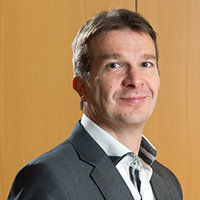What is good management and leadership?

Professor of Management Alf Rehn recently noted that leadership is not simple or unidirectional, but actually paradoxical. He illustrates the ‘mystery of leadership’ by stating that it is showing without showing anything, creation of space by restricting it, and shouting silently. We at Turku School of Economics study and teach issues related to management and leadership. The related literature has evolved over decades to reveal that there indeed exist many paradoxes in the field.
One thing is for sure: organizations do not exist as such, but they consist of and are created by people; creatures that sense and feel. Yet, regarding decision making, people are many times discussed about like ‘pieces of a puzzle’ or parts, although maybe important ones, of a ‘machinery’. Many times decisions are legitimated by monetary issues, in one way or another. These analogies are misdirected: people cannot be simply ‘kicked around’ and told to obey, the expectation being 100% commitment and resilience. It is important to keep in mind that an organization represents at the same time one structure and culture, and dozens of sub-cultures and even thousands of individuals. Because our most valuable – or actually only – strategic asset in higher education is our people, it is extremely important to understand what they value.
The field is difficult to study and teach, because it is by nature as much of an ‘art’ as a science. Indeed, we seldom give direct answers to managerial problems, but rather facilitate students to ask the right questions, question established managerial beliefs: how is good management and leadership constructed today and especially in the future environments. Leadership, as a phenomenon and as an activity, is such a versatile and contradictory issue that it is far from a simple collection of rules and guidelines. What works in one context may cause a catastrophe in another. Good leadership is difficult because it requires constant balancing between different characteristics and virtues. In my view, a good leader is humble, good listener, and empathetic, but also demanding and assertive, all at the same time. Some people think good leadership is only about having the guts to talk straight (cf. the virtues admired by many people in Presidents Trump and Putin). This is not to say that we should go for some kind of weak management. Being able to combine assertiveness with empathy is a great strength. Great leaders are not ’pipe brained’, but capable of considering several contradictory ideas or views simultaneously without that reducing their ability to act.
It is a common misbelief that good leaders are more born than made. This gives hope to all of us who want to be good leaders. As we grow to be good leaders, we should constantly examine and develop our state of mind: what are the principles of good leadership and how can we develop ourselves in relation to those. Below I have listed some principles that I aim to follow the best I can. They are based on personal experience and growth, on lessons learned from experienced managers, as well as simply on common sense.
Ethicality (no matter what) and transparency: No hidden agendas, no favoring, no ill-justifiable exceptions to rules. Be open, put yourself on the line: when you give, you also get.
Accountability, taking (and giving) responsibility: If you promise something, keep it. Do not explain and complain, but care: culture of blaming does not help anybody.
Loyalty, group before individual: Everybody has responsibility for successful operation. The success of an individual cannot run over the success of the group. By letting your subordinates to prosper your organization and you will prosper.
Respect and encourage: When there is reason for positive feedback, say it aloud, as often as possible. Let people grow to tasks and capabilities that may not be even known yet. Enable creativity.
Be proactive and inspire: Act, support, set a good example. Take carefully evaluated risks for the future. Allowing failures and difference enables learning and renewal. Show the direction, but also give space to operate.
Be humble: Do not believe you know best. Do not think you or your organization is ever ready: always pursue better.
Big picture: Keep the big picture in mind and concentrate on the essential.
Keep calm even amidst turmoil: Do not react unless you know what you are doing. Carefully consider: risk of changing more or less well functioning practices (past, good times) vs. risks of doing nothing (future) in an ever changing environment.
Last but not least: be yourself.
Markus Granlund
Dean, Turku School of Economics
